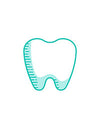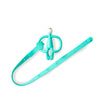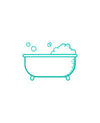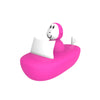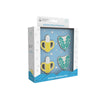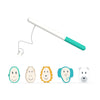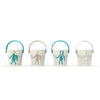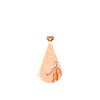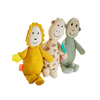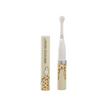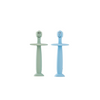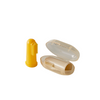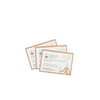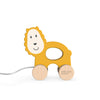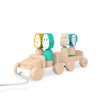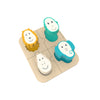6 Key Teething Tips to Remedy Your Little One

When my first baby was teething, I found it exhausting to deal with. I know some babies sail through the teething phase with no problems at all, but that wasn’t the case for us! At that time, not many of my friends had children. So, I’d lie awake into the night googling tips and scouring Mumsnet for anyone who could relate.
The next few years of my life were dedicated to developing Matchstick Monkey. Along the way, I discovered some really great advice on teething that I want to share with you.
This blog post details 6 of my top key teething tips for the parents of teething babies.
Find the right, safe teething toy for your little one
Finding the right teething toy for your baby isn’t quite the Holy Grail, but it sure does help. A LOT! If you’re not sure what to look for. These are a few things I’d advise to keep in mind:
- Look for a toy that can safely reach all the areas of your baby’s mouth where teeth emerge, but that won’t reach the back of the throat.
- A shape that’s easy for small hands to hold.
- Look for toys that have passed the latest safety standards.
- Teething toys should be made with food-grade materials that are safe to chew.
- Hollow teethers with squeakers can potentially mean a build-up of harmful bacteria or even mould inside the toy.
These were some of the most important things I considered when designing Matchstick Monkey.
Try hard foods
If your baby’s teething, it’s probably a sign they’re getting ready to try solid foods. The NHS guidelines recommend that if you’re breastfeeding your baby, it’s fine to start introducing solid foods into their diet at the age of 6 months. This includes solid foods made into purées.
If your child is already comfortable with eating solid foods, try some healthy homemade rusk recipes. Chewing on firmer food can gently and naturally encourage the emerging teeth to finally break through the gums.
Cooling your baby’s gums
Teething can make gums red and sore, so chewing something cold can feel satisfying and relieving! If your baby is eating solid food, sticks of carrot or cucumber chilled in the fridge can be a great snack (as long as they’re eaten under your supervision).
You can also cool your baby’s teether in the fridge before giving it to your little one to chew. Clean cotton cloths or muslins dipped in a little water and chilled in the fridge can also help.
Preventing and soothing teething rashes
When your gums are sore and you’re feeling irritable - the last thing you need is to feel sore all around your mouth too! Unfortunately, the copious drool that comes with teething (and gets on pretty much everything) can cause redness and irritation. This is what is often referred to as a teething rash.
To help soothe your baby’s skin and prevent irritation, gently dry and pat off excess drool regularly with a soft, clean cloth. A soft baby muslin made from organic cotton is ideal. I always carried several on me at any time just for this and other little spills!
Applying a gentle water-based cream, lotion or moisturiser can also help to calm your baby’s skin. It also offers another protective layer between the soft skin and any drool.
Teething gels and granules
Teething gels and granules for children contain a mild, local anaesthetic and are available from pharmacies.
Although there’s a lack of scientific evidence to prove that teething gels and granules work, some parents feel like they do help. It’s advised to try non-medical options on their own first, like teething toys. But, if you think a teething gel or granules may work, ask your local pharmacist for advice on which one to try.
A common problem with gels and granules is actually applying it to the gums. Slippery gels coupled with wet mouths aren’t exactly an ideal combo. I’d often find I’d be bitten instead of managing to apply any medication! Sound familiar?
If you do own a Matchstick Monkey teething toy, you can simply apply the gel or granules into the bumps on the back of the toy’s head. The bumps keep the medication in place until your little one chomps it right down, straight on the source of their pain!
Painkillers
The NHS advises that “paracetamol or ibuprofen can be given to relieve teething symptoms in babies and young children aged 3 months or older.”
If you’re not sure about this, consult your GP first.
Teething can sometimes seem never-ending if your little one is in pain, so I hope you found this post helpful! We’d love you to share your teething moments with us on Instagram @matchstick_monkey.

